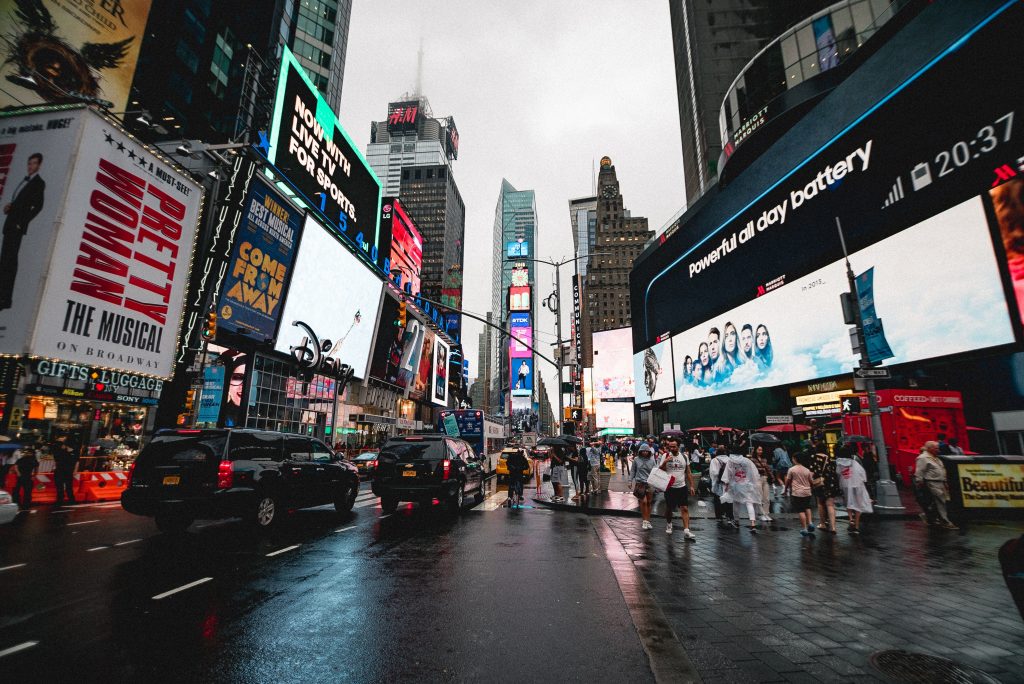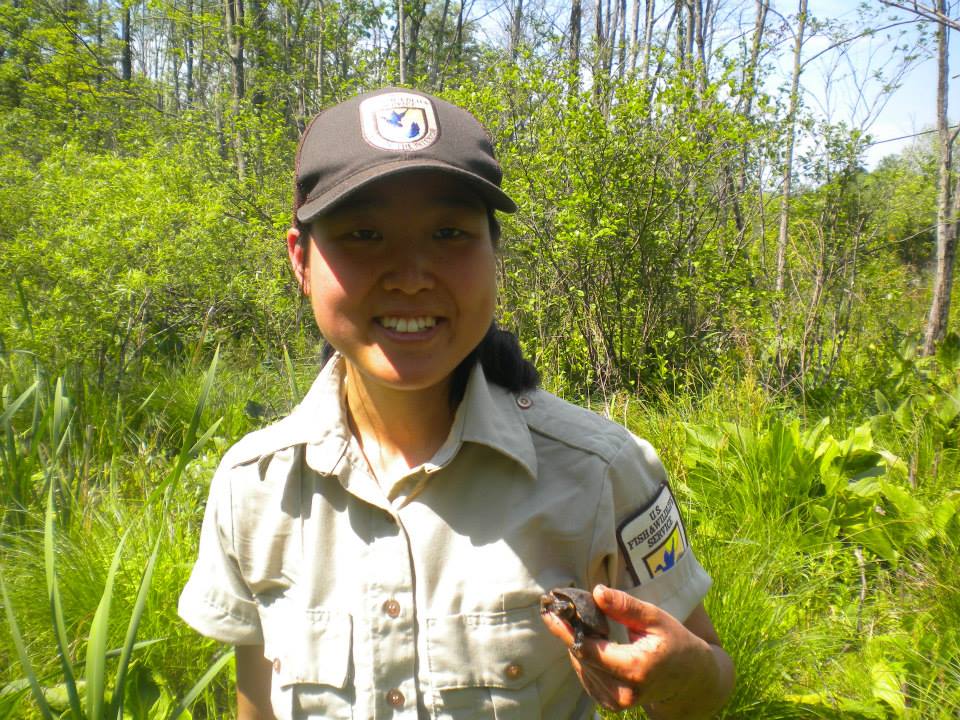Executive Summary
The City of New York is on a mission to redesign its urbanized grey infrastructure with the goal of managing, reducing, and improving water quality of its stormwater runoff. The City is trying to accomplish this with green infrastructure. In 2010, New York City’s (NYC) Department of Environmental Protection (DEP) launched its Green Infrastructure Plan of 20 years, outlining its goals and implementation strategies. The plan includes the following goals: build affordable grey infrastructure; repair and optimize existing sewer systems; use Green Infrastructure to control runoff; utilize adaptive management to monitor, adjust, and adapt construction projects as needed; and engage and include stakeholders. A three year review of the project’s implementation, 2010-2013, is summarized in this report. This report focuses on NYCDEP’s adaptive management approach and its successes in adjusting and adapting their Green Infrastructure projects. The report also reviews DEP’s collaborative efforts between key stakeholders and engagement of stakeholders impacted by these green infrastructure projects.

INTRODUCTION
The City of New York is on a mission to redesign its urbanized grey infrastructure with the goal of managing, reducing, and improving water quality of its stormwater runoff. The City is trying to accomplish this with green infrastructure. In 2010, New York City’s (NYC) Department of Environmental Protection (DEP) launched its Green Infrastructure Plan of 20 years, outlining its goals and implementation strategies. The plan includes the following goals: build affordable grey infrastructure; repair and optimize existing sewer systems; use Green Infrastructure to control runoff; utilize adaptive management to monitor, adjust, and adapt construction projects as needed; and engage and include stakeholders. A three year review of the project’s implementation, 2010-2013, is summarized in this report. This report focuses on NYCDEP’s adaptive management approach and its successes in adjusting and adapting their Green Infrastructure projects. The report also reviews DEP’s collaborative efforts between key stakeholders and engagement of stakeholders impacted by these green infrastructure projects.
STAKEHOLDER COMMUNICATION & ENGAGEMENT
Throughout 2010, NYC’s DEP used myriad communication strategies and methods to inform and increase awareness of their Green Infrastructure Plan. They hosted a general meeting with environmental groups, city agencies, and the general public to introduce the Plan’s vision and objectives. DEP’s education program and Community Liaisons informed and updated schools and community leaders of the Green Infrastructure Plan. DEP also updated its website with information about green infrastructure and stormwater management.
Communication with stakeholders increased in 2012. The Department of Environmental Protection met with elected officials, community boards, and local organizations to update and inform impacted stakeholders of various green infrastructure construction projects within their neighborhoods. In addition, postcards were sent to 25,000 residents of nearby neighborhoods. DEP held regular meetings with the Green Infrastructure Task Force members. Its members consist of representatives from NYC’s Departments of Design & Construction, Parks & Recreation (DPR), Transportation, Economic Development Corporation, and Health & Hospitals Corporation. The Task Force was created to provide planning, design, and funding for Green Infrastructure projects. DEP also hosted scheduled meetings with NYC’s Housing Authority (NYCHA), Departments of Buildings, Cultural Affairs, Education (DOE), Sanitation, Housing Preservation & Development. The Department of Environmental Protection created the Green Infrastructure Steering Committee to focus on and take responsibility for outreach activities. The committee met quarterly and consisted of members representing a variety of stakeholder groups. Eventually, the committee split into three working groups: Green Jobs, Education & Engagement, Technical Advice & Research. DEP worked with the three groups to encourage and allow for stakeholder participation in developing the Green Infrastructure Program; increase awareness to the general public; and help promote green infrastructure practices.
DEP heavily focuses on stakeholder communication and transparency throughout the Green Infrastructure Plan. They also put heavy emphasis on expanding the Green Infrastructure projects by increasing stakeholder engagement, participation, and involvement in the movement. In 2012, DEP hosted multiple public workshops in Brooklyn, Queens, and the Bronx to encourage municipalities to take on Green Infrastructure projects through the Green Infrastructure Grant Program. DEP reviewed the proposal criteria and provided guidance to ease the application process. The workshop was a success as all three boroughs applied and received grants to initiate Green Infrastructure projects. In 2013, DEP partnered with MillionTreesNYC, and NYCHA to facilitate another workshop in the three boroughs where the Green Infrastructure Projects were active. The workshop provided hands-on training for Right-of-way Bioswales and Stormwater Greenstreets care and maintenance to municipal officials and residents who were also given the opportunity to adopt or maintain one of the green infrastructures installed in their neighborhood.
INTER-AGENCY PARTNERSHIPS AND COLLABORATION
The NYCDEP’s expansion strategy focused on engaging and involving city agencies and other professionals. An inter-agency partnership was formed through the Green Infrastructure Task Force’s establishment in 2011. The Department of Environmental Protection provided information and resources needed for the Task Force to plan, design, and incorporate stormwater management practices into their infrastructure projects. In 2011, DEP joined the Trust for Public Land, School Construction Authority, and DOE, by contributing $5 million annually, to construct green infrastructure for 4 years. In 2013, the partnership grew with additional involvement from DPR and DOE. Between 2011 and 2013, three playground green infrastructure constructions were completed, three playground designs were completed, and eight sites were added to the program, with designing already in process. In 2012, DEP and DPR defined and established DPR’s Green Infrastructure maintenance roles. DEP and NYC’s Housing Authority agreed on a working partnership for the next five years. The inter-agency agreements created were flexible to change and amendments to adjust to additional and/or completed projects.
NATIONAL & INTERNATIONAL COLLABORATION
The Department of Environmental Protection is seeking other collaborative opportunities on a global scale. They sponsor international fora consisting of scientists, engineers, city planners, and policy makers from around the world. The focus of these fora is on developing innovative designs of urban green infrastructure and practical solutions to water quality and management issues. DEP was active in the International Low Impact Development Symposium of 2013. DEP also made presentations at multiple conferences nationally such as Sustainable Communities Climate Leadership Academy, Water Environment Federation’s Annual Technical Conference, and the U.S. Environmental Protection Agency’s Community Summit on Green Infrastructure.
ADAPTIVE MANAGEMENT APPROACH IN GREEN INFRASTRUCTURE DESIGNS
DEP’s Green Infrastructure design and implementation strategy is centered around monitoring and adapting. Throughout the implementation phases of all green infrastructure projects (pre, during, and post construction), monitoring of rainfall intensity, levels, water flow, and water retained is consistent and ongoing. Water level loggers, weirs, and flumes were the initial monitoring equipment used to collect water levels in 2011. Rain gauges and weather stations were added in 2012 to collect local weather data and provide context to the water level readings. Consistent performance monitoring is conducted to evaluate maintenance requirements and adapt designs with adjustments as needed to optimize green infrastructure performance.
The Department of Environmental Protection’s adaptive management approach has proven successful in many of their previous green infrastructure projects. In early 2012, data from the Enhanced Tree Pits in Jamaica Bay were inaccurate due to inlet clogging. This design problem was eliminated by installing open curb cuts in late 2012. Wet Meadows were created in Metropolitan Transit Authority bus terminal’s parking lots. Water levels were kept consistently at one foot to support the wet meadow plants. Ground water pumps, powered by solar energy, were installed to maintain this water level. This resulted in submerged monitoring equipment, v-notch weirs, which affected the water pumps’ ability to maintain water levels at the required one foot depth. Float sensors were installed as the solution to regulate the pumps and maintain the one foot water level.
The adaptive management approach has also proven to be effective in the Department of Environmental Protection’s development of policies to encourage green infrastructure and grow its market. To increase funding and receive additional financial support for the Green Infrastructure Program, DEP implemented and enforced the Parking Lot Stormwater Pilot Program in 2011. Parking Lot Accounts were charged $0.05 per square foot for lots that do not receive or pay for water service but contribute stormwater to NYC’s sewer systems. In 2011, 364 parking lot accounts were charged, resulting in $188,000 collected in fines. This revenue went towards stormwater-related expenditures. DEP identified additional parking lot accounts to charge in the following year. In 2012, the charge increased to $0.06 per square foot to account for increases in expenditures. Four hundred and fifty-five parking lot accounts were charged and $274,773 were collected. In 2014, 143 additional parking lot accounts were identified and fined for a total of $50,000. Accounts that implemented green infrastructure were exempt from such fines. Consistent monitoring and enforcement has been effective in providing additional funds to support NYC’s Green Infrastructure projects.
About the Author
 Brittany Forslind is currently a graduate student at Montclair State University, studying Sustainability Science. Forslind’s professional and academic goals are to learn about urban ecology, and how natural ecosystems can solve infrastructure challenges in urban areas by integrating them into cities through green infrastructure.
Brittany Forslind is currently a graduate student at Montclair State University, studying Sustainability Science. Forslind’s professional and academic goals are to learn about urban ecology, and how natural ecosystems can solve infrastructure challenges in urban areas by integrating them into cities through green infrastructure.
References:
New York City Department of Environmental Protection. (No Date). Green Infrastructure Plan: A Sustainable Strategy for Clean Waterways. New York City Department of Environmental Protection Web Page. Portable Document Format. https://www1.nyc.gov/assets/dep/downloads/pdf/water/stormwater/green-infrastructure/nyc-green-infrastructure-plan-2010.pdf
New York City Department of Environmental Protection. (2012, June). Green Infrastructure Plan: 2011 Pilot Monitoring Results. New York City Department of Environmental Protection Web Page. Portable Document Format. https://www1.nyc.gov/assets/dep/downloads/pdf/water/stormwater/green-infrastructure/gi-annual-report-update-supplement-2012.pdf
New York City Department of Environmental Protection. (No Date). Green Infrastructure: 2012 Annual Report. New York City Department of Environmental Protection Web Page. Portable Document Format. https://www1.nyc.gov/assets/dep/downloads/pdf/water/stormwater/green-infrastructure/gi-annual-report-2012.pdf
New York City Department of Environmental Protection. (No Date). Green Infrastructure: 2013 Annual Report. New York City Department of Environmental Protection Web Page. Portable Document Format. https://www1.nyc.gov/assets/dep/downloads/pdf/water/stormwater/green-infrastructure/gi-annual-report-2013.pdf


Recent Comments